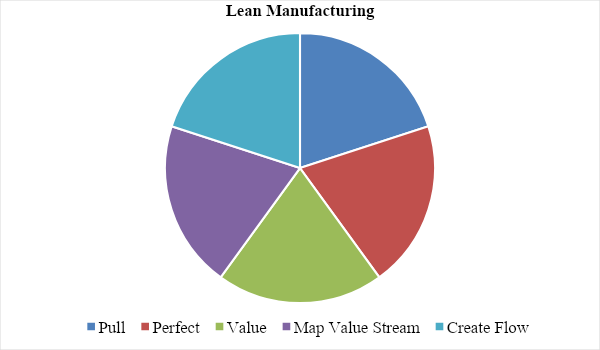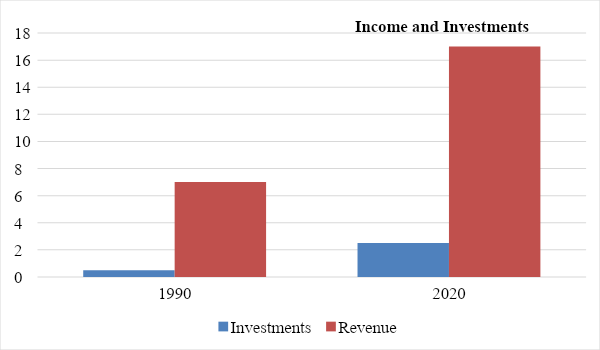Introduction
Toyota is one of the most successful companies in the world. It is lean manufacturing concept and holistic approach to business organization studied in the most prestigious business schools of the world. Toyota’s business consists of two basic components – continuous improvement and respect for people (James, 2021). Toyota’s most outstanding achievement is its manufacturing philosophy, called the Toyota Production System – TPS. TPS is the next step in effective business development after the mass production system invented by Henry Ford. Outside of Toyota, TPS is often referred to as lean production. Toyota is making its production equally accessible to customers and in line with global policy.
Products
Often companies mistakenly believe that the lean toolkit and the lean philosophy are one and the same. The lean philosophy, which is based on the Toyota Tao, involves a very deep and comprehensive cultural transformation (Cress and Fiala, 2022). TPS represents an unconventional approach to management and operations that requires reducing inefficient costs while improving employee working conditions and customer service. Toyota’s Tao represents the foundation for Toyota’s manufacturing culture, which ensures that the entire system works effectively (Soliman, 2020). Although the approach was born in the automotive industry, it has been successfully applied to other business sectors, including the service industry, in recent decades.

When applying TPS, first of all, the production process should be evaluated from the customer’s point of view. This applies to any process: production, information exchange, or service. Toyota has identified seven major types of losses – actions or costs that do not add value in production and business processes (Cress and Fiala, 2022). These losses are not only possible on the production line, but also in product development, order acceptance and office administration.
What is more, the traditional approach to process improvement primarily considers local efficiency. One must look at the equipment, at the operations that add value, and make the uptime longer, the work cycle shorter, and where possible, replace the person with an automaton. As a result, the efficiency of an individual operation increases, but it has no tangible effect on the value creation flow in general. If to restructure production in terms of lean thinking, the main potential for improvement is the elimination of a huge number of operations where no added value is created. In lean manufacturing, jobs are organized and operate according to a sequence of process operations (Cress and Fiala, 2022). Moreover, it is necessary to ensure the flow of single products (services), which one after another undergo various technological operations, for example, welding, assembly, packaging. The speed of such processing is determined by the needs of the consumer, who cannot be kept waiting.
Wealth
The main wealth of Toyota is its products – the manufacturer primarily focuses on developing high-quality vehicles for different target audiences. Last year, the reporters claimed that Toyota raised almost $245 billion for selling their products (Cress and Fiala, 2022). It signifies that its manufacturing, management, marketing, and other aspects are well-established. Continuity of product flow, adaptation to changes in demand in quantity and nomenclature of products is achieved by means of two basic principles: “just-in-time” and automatization. These two principles are the pillars of the Toyota system. “Just-in-time” generally means producing the right kind of products in the right quantity and at the right time. Automatization can be simplified to mean employee self-monitoring of defects. It supports accurate product delivery by eliminating the possibility of defective parts from the preceding production process entering the subsequent one and by preventing failures (Soliman, 2020). The other two principles are flexibility in the use of labor, which means changing the number of workers in response to fluctuations in demand, developing creative thinking, and introducing constructive ideas. The use of employee suggestions will produce significant savings.
People
For Toyota, quality is all about process and people. People can spend a lot of money on the best and the most advanced problem prevention system, but the quality will remain the same. First people have to make sure that everyone in the company understands the principle that quality is everyone’s responsibility (Soliman, 2020). Ensuring quality for the customer should define one’s value system, and there is no room for compromise, because one’s business exists only because people create benefit for the customer. This is the primary aspect allowing for a company to make money and the employees to keep their jobs.
One of the most striking examples of Toyota’s Dao in action is the development of the Prius. Its creation was a real coup in the history of the company and changed Toyota as a company in many ways. The environment of the early 1990s was a source of certain apprehension for Toyota executives (Soliman, 2020). The problem was that things were going too well. The Japanese economy was booming, while Toyota’s successes were sensational. Many companies in this environment think they can rest on their laurels. At that time, Toyota had a well-established system for developing modifications to existing car models, but the development system, in general had not changed for decades (Cress and Fiala, 2022). Overall, Toyota is never oblivious to the possibility of a crisis, and sometimes company leaders provoke a crisis situation deliberately if it can benefit the cause.
Policy and Money
Since 1995, the program had a clear focus on the production of the first serial hybrid car (Monden and Talbot, 2019). Because it was a question of new production technology and the creation of a new production system, the plan was for three years. During the first year, it was planned to produce a prototype. The next year would be devoted to research and detailing, and the third year would be devoted to finalizing the production version and preparing for production.
Toyota’s critics say the huge investment in the Prius project, estimated to be in the hundreds of millions to billions of dollars, is inexpedient, and they express doubts about the return on investment. To recoup its capital investment, Toyota must sell 300,000 hybrid cars a year. Toyota has not reached that level (Monden and Talbot, 2019). The goals of creating the Prius went further than immediately increasing the company’s profitability. Mankind got the first mass-produced car that does much less damage to the environment.
Toyota factories look like automobile factories. In fact, they are a big brain, a laboratory with one main goal: not just to produce cars, but to improve quality. Among the primary goals (quality, cost, delivery), quality should always be given the highest priority. No matter how attractive the price and delivery terms offered to the customer, the company cannot compete if the product or service is of insufficient quality (Monden and Talbot, 2019). However, they do make cars here, about two a minute. That is in a sense a byproduct of the great mission of improving production. Good cars, of course, but even more important is good car production because it is not a product, it is a process.
This is the process to which all of Toyota’s activities are subjected. According to Steven Spear, the activities here are divided into three components: producing cars, producing better cars and learning how to produce better cars (Monden and Talbot, 2019). In its never-ending quest to win, the company has added another layer: it is constantly improving a process that is designed to improve other processes.
Toyota has no trouble producing complex parts locally – factories open as fast as the system and quality standards allow. Toyota sells products made by employees – at higher margins and lower prices than its competitors do. Toyota has certain structural advantages in the form of low medical and pension costs. The real reason for the concern’s prosperity is what Chad Buckner puts it, “We’re always striving for more” (James, 2021). That is not just an operating principle – a way of thinking about the company.
Of course, Toyota is far from flawless. It has received many complaints about build quality and safety in recent years. This speaks to the strain that any system undergoes as it grows rapidly. Product quality issues are the headache of a few top managers. Globally, a strategy of continuous improvement gives you an edge over the competition. When people come out ahead, your competitors do not just find themselves behind, trying to regain the lead through reorganization and increased sales.
Toyota’s success in the global market is due to the fact that its management system is more efficient than that of other competing manufacturers. It manages to achieve high product quality at relatively low production costs (James, 2021). Toyota is constantly searching for better management practices. It is based on such popular principles as establishing strong supplier relationships, quality-based management (TQM) and lean manufacturing (Soliman, 2020). Through a combination of these approaches, the corporation has gained a huge competitive advantage over Western companies.
Toyota’s main impact on the global automotive industry is that its focus on quality has revolutionized the automotive industry in the past; almost all automotive companies have had to try to improve their products’ quality. This is the cornerstone of Toyota’s cost leadership strategy. An analysis of Toyota’s investment structure in foreign markets between 2003 and 2013 showed a redistribution, with an increase in the share of investments in Asian countries and a decrease in European countries (Cress and Fiala, 2022). In addition, Toyota’s investments in the Japanese market decreased significantly (by 10%) while increasing by 4.3% in the North American market. Toyota entered Asian markets in 2005 (Cress and Fiala, 2022). Investments in other countries are also growing, and their share increased from 5.41% to 5.99% between 2003 and 2013 (Cress and Fiala, 2022). The main factors for Toyota’s success and influence are economics, innovative management and innovative technology.

Conclusion
As an immediate task, Toyota must advance the business and change the cost structure in quick response to changing market conditions. In particular, Toyota should reduce contingent costs and strengthen its business in established markets in developed countries. Toyota is recommended to accelerate business expansion in fast-growing emerging markets by carefully and scrupulously monitoring market conditions in its regions and introducing products that meet the specifics and needs of each market.
Reference List
Cress, P., and Fiala, T. (2022) ‘Adapting the Toyota production system in plastic surgery practices to improve practice management and the user experience’, Aesthetic Surgery Journal, 42(7), pp. 830-832.
James, R. (2021) ‘The Toyota way or the unions’ way?: Examining the nexus between lean and unions in Toyota Australia’, The International Journal of Human Resource Management, 32(6), pp. 1273-1311.
Monden, Y. and Talbot, B. (2019) The Toyota management system: linking the seven key functional areas. Routledge.
Soliman, M. H. A. (2020) ‘The Toyota way to effective strategy deployment: how organizations can focus energy on key priorities through Hoshin Kanri to achieve the business goals’, Journal of Operations and Strategic Planning, 3(2), pp. 132-158.